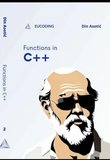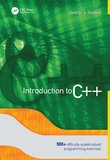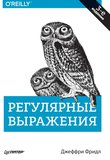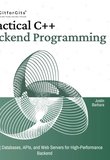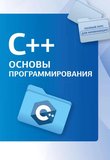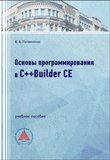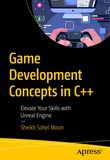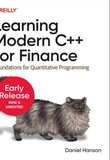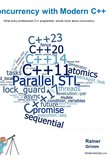-
.NET (.NET Core)
-
1C
-
APL
-
AWK
-
Agda
-
Agile/Scrum
-
Alef
-
Assembler
-
Basic
-
Beta Programming Language
-
Big Data/DataScience
-
C
-
C#
-
C++
-
CSS
-
Cobol
-
Crystal
-
D
-
Dart
-
DataBase (SQL)
-
Delphi
-
F#
-
Flutter
-
Fortran
-
GPT/AI/ИИ
-
GameDev
-
Git
-
Go (Golang)
-
HTML
-
Hacking and Security
-
Haskell
-
Java
-
JavaScript (JS)
-
Julia
-
Kotlin
-
Machine Learning (ML)
-
Natural language processing (NLP)
-
PHP
-
Pascal
-
Python
-
R
-
Ruby
-
Rust
-
Scratch
-
Swift
-
UML
-
UX/UI
-
Visual Basic
-
Wolfram
-
XML
-
АСУ
-
Проектирование/System Design
-
Сети/Network
-
Схемотехника/электронные схемы
-
.NET (.NET Core)
-
1C
-
APL
-
AWK
-
Agda
-
Agile/Scrum
-
Alef
-
Assembler
-
Basic
-
Beta Programming Language
-
Big Data/DataScience
-
C
-
C#
-
C++
-
CSS
-
Cobol
-
Crystal
-
D
-
Dart
-
DataBase (SQL)
-
Delphi
-
F#
-
Flutter
-
Fortran
-
GPT/AI/ИИ
-
GameDev
-
Git
-
Go (Golang)
-
HTML
-
Hacking and Security
-
Haskell
-
Java
-
JavaScript (JS)
-
Julia
-
Kotlin
-
Machine Learning (ML)
-
Natural language processing (NLP)
-
PHP
-
Pascal
-
Python
-
R
-
Ruby
-
Rust
-
Scratch
-
Swift
-
UML
-
UX/UI
-
Visual Basic
-
Wolfram
-
XML
-
АСУ
-
Проектирование/System Design
-
Сети/Network
-
Схемотехника/электронные схемы
Меню
C++ Programming: An Object-Oriented Approach
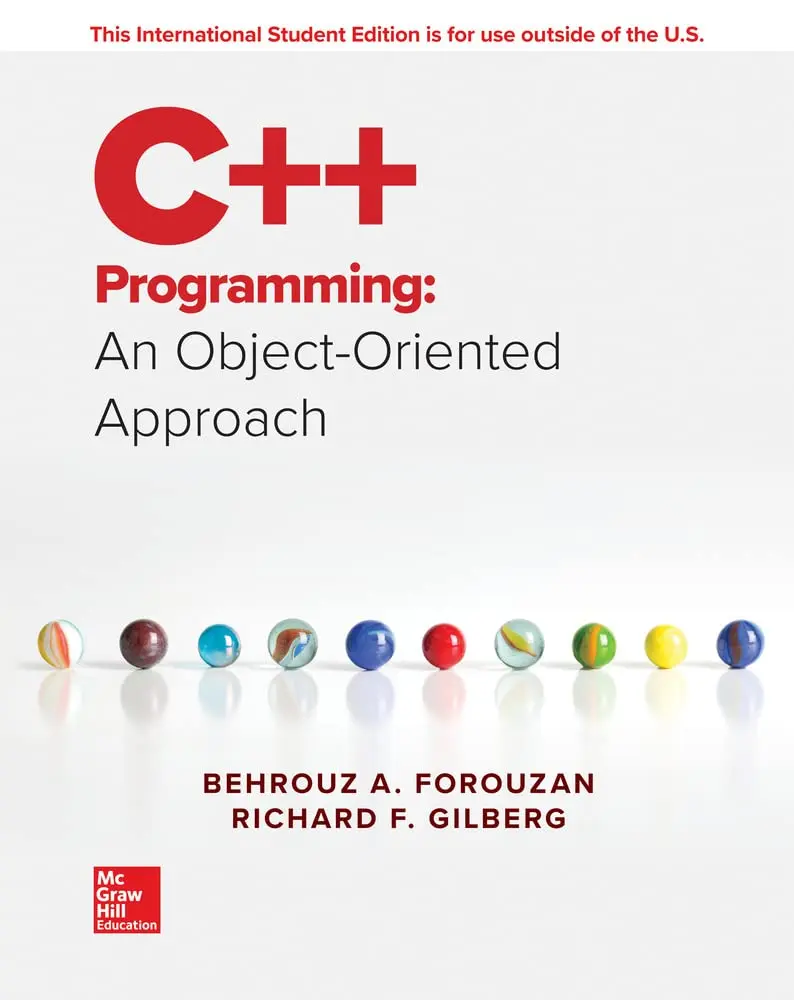
Автор: Forouzan Behrouz A., Gilberg Richard
Дата выхода: 2020
Издательство: McGraw-Hill Education
Количество страниц: 959
Размер файла: 8,5 МБ
Тип файла: PDF
Добавил: codelibs
Cover
Title
Copyright
Brief Table of Contents
Contents
Preface
What Is the C++ Language?
Why This Book?
Appendices
Instructor Resources
Acknowledgments
1 Introduction to Computers and Programming Languages
1.1 Computer System
1.2 Computer Languages
1.3 Language Paradigms
1.4 Program Design
1.5 Program Development
1.6 Testing
Key Terms
Summary
Problems
2 Basics of C++ Programming
2.1 C++ Programs
2.2 Variable, Value, and Constant
2.3 Components of a C++ Program
2.4 Data Types
Key Terms
Summary
Problems
Programming Projects
3 Expressions and Statements
3.1 Expressions
3.2 Type Conversion
3.3 Order of Evaluation
3.4 Overflow and Underflow
3.5 Formatting Data
3.6 Statements
3.7 Program Design
Key Terms
Summary
Problems
Programs
4 Selection
4.1 Simple Selection
4.2 Complex Decisions
4.3 Decisions on Specific Values
4.4 Conditional Expressions
4.5 Program Design
Key Terms
Summary
Problems
Programs
5 Repetition
5.1 Introduction
5.2 The while Statement
5.3 The for Statement
5.4 The do-while Statement
5.5 More About Loops
5.6 Other Related Statements
5.7 Program Design
Key Terms
Summary
Problems
Programs
6 Functions
6.1 Introduction
6.2 Library Functions
6.3 User-Defined Functions
6.4 Data Exchange
6.5 More About Parameters
6.6 Scope and Lifetime
6.7 Program Design
Key Terms
Summary
Problems
Programs
7 User-Defined Types: Classes
7.1 Introduction
7.2 Classes
7.3 Constructors and Destructors
7.4 Instance Members
7.5 Static Members
7.6 Object-Oriented Programming
7.7 Designing Classes
Key Terms
Summary
Problems
Programs
8 Arrays
8.1 One-Dimensional Arrays
8.2 More on Arrays
8.3 Multidimensional Arrays
8.4 Program Design
Key Terms
Summary
Problems
Programs
9 References, Pointers, and Memory Management
9.1 References
9.2 Pointers
9.3 Arrays and Pointers
9.4 Memory Management
9.5 Program Design
Key Terms
Summary
Problems
Programs
10 Strings
10.1 C Strings
10.2 The C++ String Class
10.3 Program Design
Key Terms
Summary
Problems
Programs
11 Relationships among Classes
11.1 Inheritance
11.2 Association
11.3 Dependency
11.4 Program Design
Key Terms
Summary
Problems
Programs
12 Polymorphism and Other Issues
12.1 Polymorphism
12.2 Other Issues
Key Terms
Summary
Problems
Programs
13 Operator Overloading
13.1 Three Roles of an Object
13.2 Overloading Principles
13.3 Overloading as a Member
13.4 Overloading as a Nonmember
13.5 Type Conversion
13.6 Designing Classes
Key Terms
Summary
Problems
Programs
14 Exception Handling
14.1 Introduction
14.2 Exceptions in Classes
14.3 Standard Exception Classes
Key Terms
Summary
Problems
Programs
15 Generic Programming: Templates
15.1 Function Template
15.2 Class Template
Key Terms
Summary
Problems
Programs
16 Input/Output Streams
16.1 Introduction
16.2 Console Streams
16.3 File Streams
16.4 String Streams
16.5 Formatting Data
16.6 Program Design
Key Terms
Summary
Problems
Programs
17 Recursion
17.1 Introduction
17.2 Recursive Sort and Search
17.3 Program Design
Key Terms
Summary
Problems
Programs
18 Introduction to Data Structures
18.1 Introduction
18.2 Singly Linked List
18.3 Stacks and Queues
18.4 Binary Search Trees
Key Terms
Summary
Problems
Programs
19 Standard Template Library (STL)
19.1 Introduction
19.2 Iterators
19.3 Sequence Containers
19.4 Container Adapters
19.5 Associative Containers
19.6 Using Functions
19.7 Algorithms
Key Terms
Summary
Problems
Programs
Index
A
B
C
D
E
F
G
H
I
J
K
L
M
N
O
P
Q
R
S
T
U
V
W
X
Z
C++ Programming: An Object-Oriented Approach has two primary objectives: Teach the basic principles of programming as outlined in the ACM curriculum for a CS1 class and teach the basic constructs of the C++ language. While C++ is a complex and professional language, experience shows that beginning students can easily understand and use C++.
C++ Programming: An Object-Oriented Approach uses a combination of thorough, well-ordered explanations and a strong visual framework to make programming concepts accessible to students. The authors stress incremental program development, wherein program analysis is followed by building a structure chart, constructing UML flow diagrams, writing algorithms, undertaking program design, and finally testing. This foundation, combined with a focus on the benefits of a consistent and well-documented programming style, prepares students to tackle the academic and professional programming challenges they will encounter down the road with confidence.
